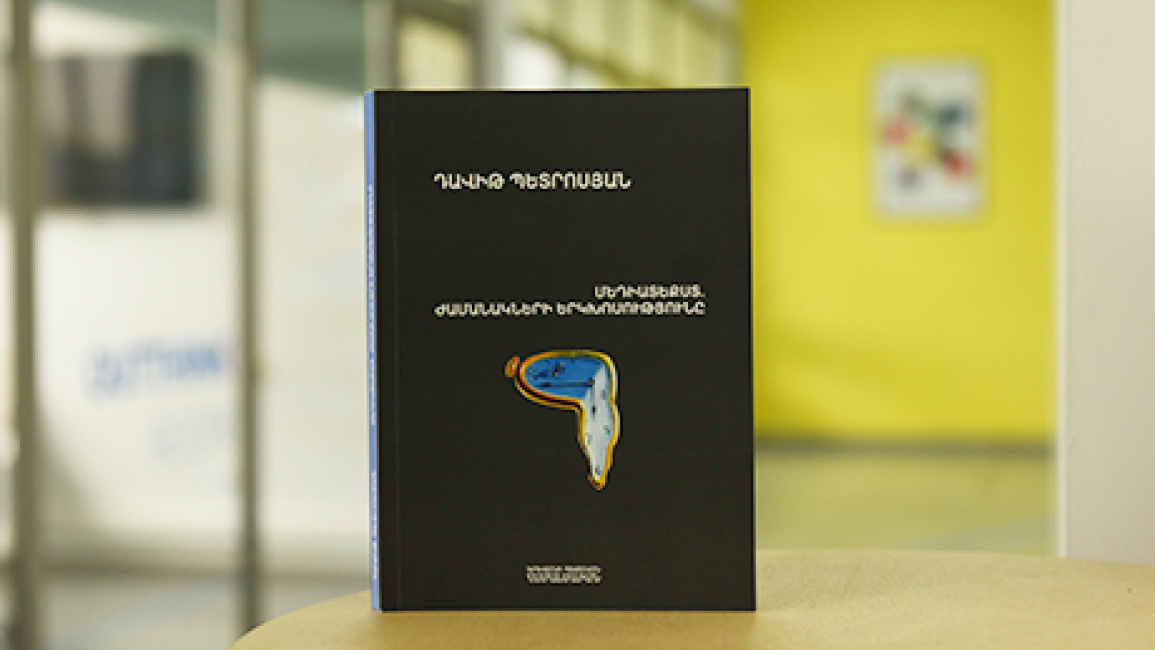- Main
- Node
- PROFESSOR DAVIT PETROSYAN'S "MEDIATEXT. THE DIALOGUE OF THE TIMES" PRESENTATION OF THE BOOK
November 10, 2022 | 15:47
Education
PROFESSOR DAVIT PETROSYAN'S "MEDIATEXT. THE DIALOGUE OF THE TIMES" PRESENTATION OF THE BOOK
YSU publishing house has published the book "Mediatext. The dialogue of times" book. We talked with the author about the issues raised in the book, referred to professional issues, and compared the content features of the new book and the previously published collection.

- Mr. Petrosyan, is your new book a continuation of the previous collection?
- At the core of the problems presented in the previous book ("Story, media text, opposite perspective") is also the media text, considered in the context of the story and the opposite perspective. The multidimensionality of the term "verse", which is also characteristic of the media text, is combined with the concept of "opposite perspective" in the field of writing, due to which the communication provided opportunities for remarkable observations in the external and internal dimensions of the text. The main purpose of my articles included in this book is the usage of media-text possibilities in the dialogue of times.
- Does such an approach provide an opportunity to examine the existing professional problems in the framework of media-media-text interactions?
- Of course. The boundaries of media and its perception have been greatly expanded these days thanks to the Internet. Now the study of problems related to the media text has mainly moved to the field of interdisciplinary research. To carry out such research, it is important to have a systematic knowledge of the researcher, not only in journalism, but also in the fields of history, semantics, literary studies, and cultural studies in general.
- In the introduction, you presented all the articles in the collection as a partial monograph. What accounts for such wording?
- The principle is as follows. Although the articles cover a wide range of topics, they are written and organized with a logical internal unity, and the core of the research is the media text. Therefore, the book as a whole can be considered a monograph on media text. By the way, such wording can often be found in the scientific environment.

- One of the common features of this and your previous books is the exploration of the dialogic layers of the text. In many articles of the previous book, the primary issue was the examination of the journalist author's "internal dialogue", that is, the "dialogue of selves" living in him, but what has received special attention in this book?
- Text in general, including media text, cannot be imagined outside the boundaries of time and space. In this case, I was interested in the journalist author's understanding of "inner time" in the relationship between man and time. In addition, "inner time", as described by the Greek logician, is "the life of the soul", I would add, also "the life of the mind". In the articles, I tried to examine how the intra-temporal rhythm of the media text is played in the author, based on this, to what extent the remarkable aspects of the presentation of new material, interaction with the audience are revealed, and how much the dialogical possibilities of "internal time" contribute to this process. The topic itself is understudied in our journalism. I hope that in the future researchers will present new interpretations as well.
- What do you mean by "dialogue of times"?
- The book consists of two sections. In the first one the value boundaries of communication in the form of the author's internal time, the myth of the road in Armenian media discourse, the manifestation of new qualities of individual identity in social networks, new trends in the transformation of Armenian art in Internet sites, etc. have become the subject of study.
In the second section ("Traditional presence”), I tried to examine the publications covered in the pages of the Armenian press at the end of the 19th and the beginning of the 20th century about the civilizational and cultural values emerging in the national life.
These were fortunate times in the life of our people, so the sequence of events of those decades and the remarkable developments of our day takes on a new meaning when viewed in the context of those times. Moreover, in the 21st century, thanks to information technology, dialogue is everywhere. It remains for the media researcher to search, find and re-interpret the processes taking place within the media, which are newly revealed and presented to the scientific community in the case of interdisciplinary research.
Ani Sukiasyan

